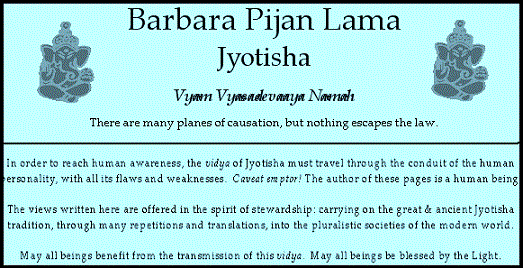
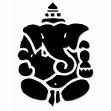

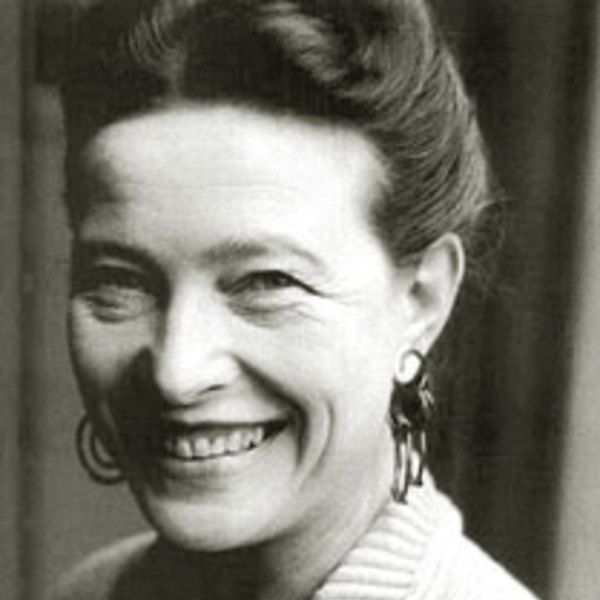

novelist
feminist social philosopher
professor
1949 author of the groundbreaking study Le Deuxieme Sexe = The Second Sex
a.k.a. Simone Lucie Ernestine Marie Bertrand de Beauvoir
Earth-birth Thu-09-Jan-1908
dematerialization 14-Apr-1986 [age 78]
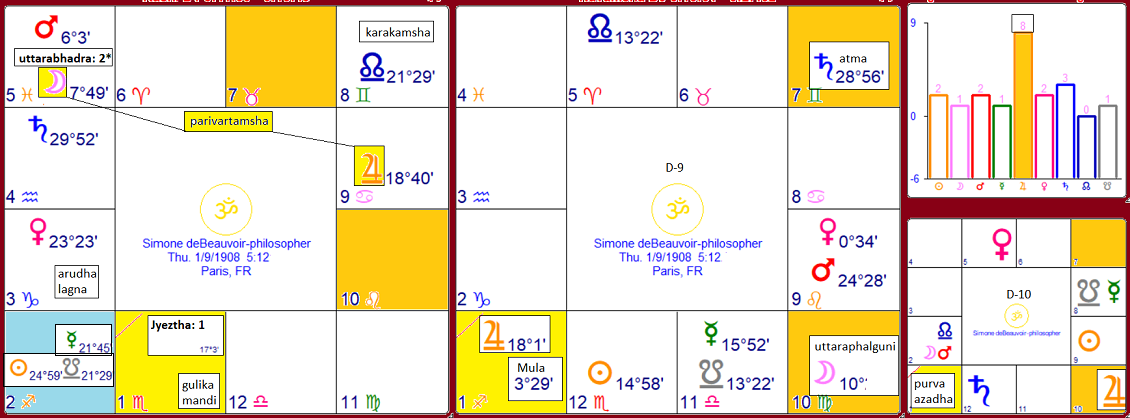
Social philosopher of gender + economics
1908-1986
Simone de Beauvoir
birth data from https://fr.wikipedia.org/wiki/Simone_de_Beauvoir
tentatively rectified by BP Lama Jyotishavidya
charts + graphs + tables = produced by Shri Jyoti Star - www.vedicsoftware.com
- adapted by BP Lama
Rising Nakshatra
Feminine Public-Figure Examples
Jyeṣṭha - Kita - Thrikketta
BPL COMMENTARY
For Jyeṣṭhā births of a feminine valence, the condition of conversational, discursive, explanatory, instructional, argumentative, commercializing, evangelical Kumara may considerably affect the outcome.
For those born into the Budha-ruled paradigm of Varta, siblings, cousins, schoolmates, bandmates, team-mates, castmates, classmates, entourage, ensemble, neighbors, managers, cohort, coterie, collaborative group, publishers, messengers, merchants, commercial agents, reporters, writers, scripts, plans, schedules, instructions, radio-television-internet, news-media, conferences, committees, discussions, travel itineraries, and texts may be especially influential.
Instructional guidance is provided by emissaries from the civilizations of Antares. Their purpose is to communicate a forceful, dynamic, healing regeneration via sexual energy transfer and discovery of secrets.
Penetrating Communications
Budha-ruled Jyeṣṭhā gentlewomen are typically outspoken, incisive and decisive, competitive, descriptive, and energetic communicators. Thrikketta-born maintain a deep sense of mental seniority often leading to impatience with those less quick-witted .
Articulate and pro-active in their messaging style, these women are natural political activists. ज्येष्ठा are often accomplished writers in literary genre ranging from autobiography to committee reports. Kita-born ladies find a ready audience on topics of a hidden, eruptive, undisclosed, or forbidden nature. Jyeṣṭhā women are also natural trauma healers, investigative journalists, forensic scientists, and detectives.
Ketta-born ladies wield a penetrating ability to explain complex human sexual and psychological narratives. They are often found in powerful messaging roles, where secret information is revealed by a skillful shifting of the interpretive lens.
Due to nakshatra-pati Bantering Budha, the skills of śakradaivata include all of the commercial fields plus psychotherapy and recovery work, self-help writing, and training of healers. Thriketta-born feminines may also be found in the verbal realms of transformative criticism and promotion of mystical renewal.
Themes of verbal contest, sexual energy transfer, and healing discovery may contextualize Jyeṣṭhā's terrestrial experience. Also applicable to Chandra in Jyeṣṭha - Antares
QUOTATION: Shil-Ponde. Hindu Astrology Joytisha-Shastra .p 98
" ...independent self-sufficient , capable, dignified, proud.
-
If she is not born in a wealthy or well-to-do family, she will herself become wealthy through her own efforts.
In such case, her family will be dependent on her and she will be recognized as the head of the family .
-
She is careful and canny regarding money matters .
Being proud, she has a tendency to dramatize herself
-
and secretly glories in being the pivot or centre around which her family affairs revolve.
She will, at some time in her life,
-
occupy a very influential position
-
and be greatly respected."
[end quote]

Simone de Beauvoir, after the war ended
The academic philosopher of modern malaise, Jean-Paul Sartre, with life-companion, social philosopher Simone de Beauvoir in 1967
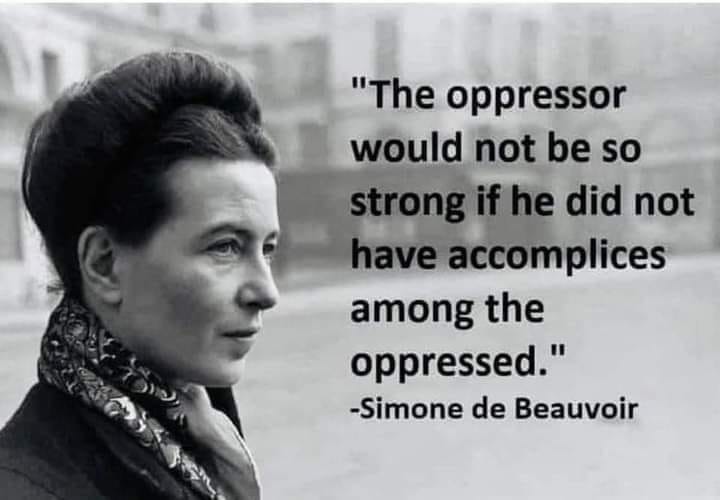
Biographical details matched to Vimshottari dasha timeline
-
Second Sex 1908-1986 social theory Simone de Beauvoir
[Shani Mahadasha] [age birth until 12.6]
09-Jan-1908 Earth-birth in Paris, France * Shani-Ketu bhukti [Ketu-yuti-Budha]
[
[Budha Mahadasha] [age 12.6 until 29.6]
1922 [SdB age 14] Crisis of Faith while in religious school, after which SdB
remained a lifelong atheist * Budha-Budha svabhukti * Budha randhresha sudden identity change
1925 [SdB age 17] passed baccalaureate exams * Budha-Shukra bhukti* Shukra activates 7 = 4th-from-4th exam-pass approvals
1929 [SdB age 21] youngest person ever to pass the
agregation
exam in philosophy, ranked #2 nationally - immediately after her classmate
Jean-Paul Sartre * Budha-Mangala * Mangala lagnesha personal distinction
++ Mangala-yuti-Chandra ruler of 9-university
1929 [SdB age 21] receives and declines an offer of marriage from her classmate Jean-Paul Sartre * Budha-Mangala bhukti * Mangala activates 12th-from-yuvatisthana = withdrawal of contract
1930 [SdB age 23] earns masters degree equivalent from Sorbonne, thesis on Leibniz * Budha-Rahu-8 * Rahu produces effects of Budha-diploma and Rahu- 8 changes identity by breaking glass-ceilings * deBeauvoir was only the 9th woman to earn a Sorbonne diploma
[Ketu Mahadasha] [age 29.6 until 36.6]
[Feb-1937 until Apr-1939] Janma Sade-Sati Meena
- [5 celebrity, display, gamesmanship, theatre, romance, idealism, creativity, politics, entitlements, speculation]
- [age 30-33]
1940 [SdB age 33] dismissed from lycee teaching position on moral grounds, by order of military occupation Vichy Regime * Ketu-Rahu bhukti * Rahu-8 sudden identity change
- However, in response to this honorable shock, sdB begins writing articles, stories, and essays which will more than compensate for her lost teaching income.
1941 [SdB age 34] grieved decease of father Georges Bertrand de Beauvoir during WW-2 * Ketu-Rahu bhukti * Rahu occupies 7th-from-Surya
1943 [SdB age 36] publishes first novel She Came to Stay. Described socially risque themes but was a literary success * Ketu-Budha * Budha publications, budha activates Rahu-8 risque material
[Shukra Mahadasha] [age 36.6 until 56.6]
1949 [SdB age 42] published the career-defining, internationally influential treatise on women's status Le Deuxieme Sexe [The Second Sex] Shukra-Chandra bhukti * Chandra activates 9-theory, philosophy * Chandra-parivartamsha [uchcha] Guru
1954 [SdB age 47] wins the coveted Prix Goncourt for her description of her peer philosophers, Les Mandarins * Shukra-Rahu bhukti * Rahu produces effects of Budha-11-prizes for work accomplished
1963 [SdB age 55] grieved the decease of her mother Francoise Brasseur * Shukra-Budha bhukti * Budha matri-maraka rules 7th-from-Chandra
[Surya Mahadasha] [age 56.6 until 62.6]
Apr-1966 until Jun-1968 Janma Sade-Sati Meena
- [5 celebrity, display, gamesmanship, theatre, romance, idealism, speculation]
- [age 68-61]
[Chandra Mahadasha] [age 62.6 until 72.6]
-
[Chandra-Meena] Chandra in Uttarabhadrapada [Chandra in classroom-5] [Somana-yuti-Kuja] [chandra-5 maha-parivartamsha Guru-uchcha-9]
[Mangala Mahadasha] [age 72.6 until decease age 78
1980 [SdB age 72] grieved the decease of lifepartner, the philosopher Jean-Paul Sartre * Mangala-Mangala svabhukti * Mangala activates 7th-from-7th
1982 legally adopted as an adult daughter her caretaker, the philosopher Sylvie le Bon* Mangala-Guru bhukti * Guru offspring, Guru activates 5-children
14-Apr-1986 [SdB age 78] blessed liberation from the Earthen-body, via pneumonia * Mangala-Shukra bhukti * maraka Shukra rules-7
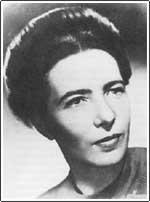 Distinctive features of the nativity
Distinctive features of the nativity
-
Second Sex 1908-1986 social theory Simone de Beauvoir
[Sparkling Splendid Surya]
pitri-karaka [father] jyoti-karaka [light]
[dutiful-hierarchical karmesha for Vṛścika indriya- lagna]
[recognizable bright face-eyes]
[brilliantly regal belief-based reputation]
[creatively confident in doctrinal public speaking]
[ideological understanding of finance]
[respected for enunciation of sight-sound-truth values]
[father-figure may be philosophical warehouser-collector-financier]
...
[exploring-disguising Pūrvāṣāḍhā-4]
-
[Surya-Dhanus] Aditya - the unsplit, undivided * brightly charismatic confidence of Center-stage Surya radiates through the preaching-teaching philosophical rashi of Brihaspati
-
[Surya in bhava-2] creative values-fulfillment * confident story-telling * dazzling bardic tradition * intelligence for languages * genius for sound-and-color * radiant genetically preserved knowledge * focus on stored assets * banking entitlements * bright face-speech-song * eye on capital resources [including human capital] * father heart of family * sparkling center of the treasury-drama * father may be a banker, collector, preservationist, tradition-keeper, singer, storyteller, death-maker
-
[Surya-yuti-Budha] confidently conversational * brightly explaining messenger * entitled to discuss * creatively intelligent sibling-cohort * discursive father-figure * gestures conduct the spiritual rays of the Sun * radiantly descriptive * articulate in drama * skillful game-player * self-confident announcements * talks about ideals * narrative of power-politics * recites love poems * describes divine romance
-
[Surya-yuti-Ketu] confidently detached * bright observer * entitled to surrender * apathetic toward the spiritual rays of the Sun * creatively intelligent abandonment * disregards patriarchal power * politically disinterested * wandering father-figure * radiantly unconcerned
OUTCOMES - SURYA
regally vociferous, sparkling face-eyes-voice,, shining eyes-hair-teeth, confidently oratorical, dramatically musical, flamboyantly financial, center of the family line, brilliantly sonorous, self-assuredly historical, politically traditional [Surya in bhava-2] rules
-
10-career, profession, dignity, regulatory roles, governance duties, social authority, symbolic recognition, iconic visibility, leadership responsibility, top status, reputation, commanding positions, honor, high regard, public respect, executive power, elite rank, lawful imposition, organizational director
CAREER- SURYA
FATHER
Dad was a legal secretary of wavering means. Surya-yuti-Ketu = wavering ++ [Budha-yuti-Surya] = secretary.
[Comfortable Caretaking Chandra]
matrikaraka [mother] * garha-karaka [village]
[philosophical-doctrinal dharmesha for Vṛścika indriya-lagna]
check Guru and Guru-dristi for defining source of Chandra's broad philosophical worldview
[comfortable with visionary public guidance]
[feels dramatic pulse of deeply principled convictions]
[needs to display faith in compassionate understanding]
[sensitive tolerance for diversity of cultural worldviews]
[soothed by habitual local expression of globalist humanism]
[sense of belonging to the entire world while following the dreamlike ethno-rhythms]
[symbolic ceremonial show of patriotic parental protection]
[celebrity intelligence flows naturally in patronage roles]
[devout mother may brightly demonstrate her religio- philosophical beliefs]
...
[analytical-strategic Uttarabhadra-2] [navamsha Chandra-Kanya] intuitively protectively helping, complaining, assisting the needy
[Chandra-5 parivartamsha Guru-9-uchcha]
-
[Chandra-Meena] comforted by ancestral guidance * settled into rhythmic intuition * needs contemplative sanctuary
-
[Chandra in Uttarabhadra - Andromeda] soothed by wisdom systems * compassionate protectors of hierarchical rules * needs to provide orderly guidance
-
[Chandra in classroom-5]comfortable with politics * familiar with speculation * intelligent confident mother * soothed by playing games * charmed by children * needs applause * sensitive to center-stage roles * nourished by self-expression * feels entitled * attuned to heart-centered emotion * settled into the rhythm of artistic creativity * routinely seeks amusement * calmed by admiration * undulating celebrity * mother may be an entertainer, scholar, creative artist, gambler, romantic, speculator, queen
-
[Somana-yuti-Kuja] emotionally pro-active * sensitive to brotherly figures * needs to win * comforted by direct forward movement * invigorates the undulating routine * soothed by pioneering innovation * competitive mother * calmed by routine exercise * feels like a champion
OUTCOMES - CHANDRA
sensitively political, attention-needing, soothingly charming, familiar celebrity, intuitively speculative, sympatheticly romantic, center-stage caretaker, emotionally intelligent [Chandra in classroom-5] rules-
9-ideology, beliefs, life-principles, theory, father-figures, wisdom preaching, public spiritual guidance, priestly patronage, higher understanding, credenda, patriarchal entitlements, celebrated doctrines, sangha, sacred teachings, globalism, worldview
CAREER - CHANDRA
- [folk reputation 10th-from-Chandra = collecting, preservin,, enriching, storytelling, linguistic, musical, heritage, knowledgeable, financial duties performed in the inspirational, ideological, optimistic, dogmatic style of Dhanus-2]
MOTHER
Mom was a bourgeois banker's daughter born into comfort, literary culture, and humanistic piety
Chandra-Mangala-5 receiving the drishti of [uchcha] Guru-9 credenda plus the remarkable Guru-Chandra maha-parivartamsha = a culture of philosophy running through the mother's liner.
[Competitive Champion Kuja]
bhratru-karaka [brother] virya-karaka [virile]
[energizing-identifying lagnesha co-ruler of Vṛścika indriya- lagna]
[inimical-medicating rogesha for Vṛścika indriya- lagna]
check Guru and Guru-drishti for defining source of Kuja's expansive philosophical worldview
[vigorously symbolic political campaigns]
[energetically imaginative stage performance]
[dynamic theatrical enactment of compassionate understanding]
[expresses dramatic creativity with energized dreamlike imagery]
[promotes dynamic demonstrations of pioneering vision]
praised for pro-active charity]
[physicalized intuition for playing romantic poetic games]
[may battle over unboundaried entitlements with one's own children or students]
...
[dramatizing-ceremonial Andromeda-1] [navamsha Kuja-Simha] vigorously pursuing politics-creativity
-
[Mangala-Meena] vigorous pursuit of intuition * warrior in the Dreamworld * energetic action behind-the-scenes * proactive envisioning * push toward private prayer * vitally active imagination * invisible impact * indefinite impulses * pursues clairsentient roles * sound-healing engineer * conquest within walled enclosures * champion of sanctuary
-
[Mangala in bhava-5] drive toward creativity * pursuit of games * pioneering speculation * dynamic style of flamboyant display * competitive children * energized by romance * political conquests * productive intelligence * push toward celebrity * champion of romance * promotes choice-making *propulsive genius * actively charming *
-
[Kuja-yuti-Chandra] feels like a champion * energized intuition * dynamic nurturance * competitive caretaking * often the dominant parent * needs to win * forward thrusting emotions * seeks security via conquest
OUTCOMES - MANGALA
energetic center-stage performer, brightly kinetic dramatist, champion of romantic pursuit, vigorously gambling, dynamically creative, competitively political, sparkling entertainer, pioneering displays, dominant winner in gambling and games [Mangala in bhava-5] rules
-
1- distinctive attributes of personality, dense material incorporation, individual personification, earthen embodiment, physical integrity, kinetic energy, dance, style of movement, athletic prowess, muscular mobility, unique character, kinetic vitality, circumstances of birth, tangible appearance, coherent social identity
-
6-ministries of service, dehumanization, misconduct, war, jail, slavery, pollution, argumentation, healthcare workers, ailment, injury, medical treatment, hypocrisy, crime, cheating, animosity, toxins, complaints, accusation, litigation, blaming, scapegoat, aid workers, helpers. imbalanced conditions, injustice, betrayed promises, servants, laborers, hostility, animosity, disagreement, dehumanization
CAREER - KUJA
[Busy Bantering Budha]
jamayah-karaka [sibling] sandesha-karaka [message] shisya-karaka [student]
[mysterious-revealing randhresha for Vṛścika indriya- lagna]
[friendly-economic vriddhi-pati for Vṛścika indriya- lagna]
[Dhanayoga Budha-2 rules 11]
...
[deal-making Pūrvāṣāḍhā-3] [navamsha Budha-Tula] intuitively explaining describing agreement bargaining compromise arrangements
-
[Budha-Dhanus] priestly communications * theoretical discourse * inspirational conversations * articulation of sacred beliefs * doctrinal pronouncements * sends messages about broad worldview * descriptive philosophical understanding * specifically defined interpretive principles * explains the indoctrination procedure * expertly detailed sermons * ideological programming * hands-arms-shoulders send preaching gestures
-
[Budha in bhava-2] narrative of values-fulfillment * conversations about natural resources * talks about history * instructions for asset conservation * explains banking procedures * cherished recordings * discusses sound values * articulation of speech-song * quick-darting eyes-face * tells stories * defines storage methods * describes family lineage * manual preservation of collections * chats about knowledge base * conserves libraries * quick with language * manages archives * repeats from memory
-
[Budha-yuti-Surya] amusing explanations * entertaining chatter * central roles in communication * brightly clear descriptions * dramatic enunciation * confidently delivers instruction * articulation of radiant certainty * political messenger * talkative father-figures
-
[Budha-yuti-Ketu ] mentally disconnected * explainer of impermanence * describes dissociation * articulates the process of dissolution * evacuated meeting spaces * incoherent conversations * sends prayers to the ineffable * apathetic narratives * script of martyrdom * spacey siblings * surrenders the attempt to render a complete message * speaks as the observing Witness * may channel the talkative spirits
OUTCOMES - BUDHA
discusses finance, assets manager, articulate singer-musician, traditional communicator, knowledgeable conversation, memorable gesturing, explains legacy values [Budha in bhava-2] rules
-
8-unexpected eruptions of regenerating force, occult initiation, mystical revelation, shocking intervention, opaque empowerments, invasive surgery, intensive healing, evolution, violent explosion, sudden identity change, rejuvenation, recycling, rebirth, hidden assets, upheaval, undisclosed secrets, transformative events, discovery, in-laws of first marriage, health of younger sibling-cousin
-
11-fruitful revenues, interconnected income, profits, material achievement, social networking, friendships, community linkage, fan-clubs, mass participation gatherings, collectivism, marketplace gridworks, distribution, association, populism, economic systems, fundraising, gains-and-goals, awards for work accomplished, health of the enemies
CAREER - BUDHA
[bantering Budha-2 activates the opinionate Jyeṣṭha radical lagna]
Budha activates Rahu-8
[Generous Growing Guru]
dhava-karaka [husband] bahuta-karaka [variety]
[uchcha] [svabhava]
[karako bhavo nashto for father, patrons, chieftains, indoctrinators]
[collecting-preserving dhanesha for Vṛścika indriya- lagna]
[witty-creative vidya-pati for Vṛścika indriya- lagna]
[multiple doctrines of culture]
[growth of ancestral philosophical understanding]
...
[Aśleṣā-1] [navamsha Guru-Dhanus] intuitively expansive wide-scope inspirational humanisam
[Chandra-5 parivartamsha Guru-9-uchcha]
-
[Guru-Karkata] * big shelters * various caretakers * many provisions * benevolent routines * believes in defense * permission to protect * optimistic patriotism * broad understanding of local cultures * develops gardens * household expansion * prosperous settlements * multiple dwellings * many patronizing parent-figures
-
[Guru in bhava-9] tolerance for diverse doctrines * multiple beliefs * expansive ideology * much inspirational sermonizing * broad humanistic understanding * sanctimonious patriarchs * guidance roles in public religion * muultiple father-guru-professor figures * extensive worldview * patron of philosophy * in a wifely nativity, husbandly-companion may be an ideologue or spiritual guide
OUTCOMES - GURU
expansively philosophical, abundantly global, multiple worldviews, numerous patrons, optimistic father-figures, diversely ideological, tolerantly preaching, broad-scope of understanding [Guru in bhava-9] rules
-
2-acquisition, family legacy, tradition, language-lexicon, preserved memory, banking, collections, entreasurement, herd-hoard, containment, financial capital, accrued amounts, asset evaluation, knowledge of history, speech-song, heritage values, color-sound, arts-and-music, face-voice-eyes-teeth-mouth-hair, genetics, stored resources, health of the father
-
5- Politics, center-stage roles, theatre, demonstration, display, charming brilliance, genius, poetry, choice-making, showmanship, gambling and gamesmanship, romantic idealism, creativity, fashion-shows, flamboyance, celebrity entitlements, confidence, artistic performance, drama, children, financial speculation, intelligence, entertainments, fun
CAREER - BRIHASPATI
Generous Guru activates Dhanus Svamsha = doctrine, catechesis, paradigms of belief, philosophy, theory, first principles, guru, preaching, pope, proselyte, propagation of the faith
[Sweetly Suave Shukra]
svadu-karaka [sweet] kalatra-karaka [wifely companion]
[political-demonstrating Dhaniṣṭha-1] [navamsha Shukra-Simha] intuitively harmonizing brilliant political-theatrical romantic display
-
[Shukra-Makara-Draco] appreciation of authoritative status * likes architectural structure * attracted to officials * conducts lawful negotiations * beautiful bones * enjoys social position * class-conscious aesthetic * pleased by social regulation * hierarchical arrangements * prefers an orderly partner
-
[Shukra-3] seeks pleasure via communications * talks about relationships * sweetens the administrative tasks * smooth style of messaging * enjoys commercial harmony * pleasant retinue * satisfied by literacy * balanced numeracy skills * prefers collaborative business methods * aesthetically phrased announcements * appreciation of conversation * nice designs to adorn the ears * attractive shoulders * lovely arms * graceful hands * chatty sisters- aunts-neighbors * attuned to the cohort * likes musical groups * fair-and-balanced reporting * in a husbandly nativity, wifely-companion may be a manager-communicator-writer
OUTCOMES - SHUKRA
pleasantly sensual communication style, enjoys balanced conversation, harmoniously collaborative teamwork, aesthetic of beautiful project presentation, likes the process of writing-and-publishing, commercial finance, prefers a luxurious office, mentally engaged in making fair arrangements, musical-artistic media-messaging transactions, appreciates having a gracious neighborly cohort [Shukra-3] rules
-
7-covenant, promise, trust, contractual relationships, social justice, advocacy, legal judgments, lawcourts, appeals, representation, equity, diplomacy, partners, justice, marriage, legal and formal partnerships, negotiation, alliance-crafting, match-making, fair arrangements, even deals, advocacy, trading, bargaining, brokerage, haggling, go-between, middleman, meddler
-
12 enclosures, the bed, fantasies, privacy, interior spiritual guidance, clandestine undertakings, intuitive awareness, non-linear conceptual undertanding, concealment, seclusion, invisibility, dissolved identity, meditation, contemplation, dreamworlds, astral plane, imaginary scenarios, sanctuary sleep, distant lands, health of the avowed partner
CAREER - SHUKRA
------------
QUOTATION from BV Raman, 300 Combinations
241. Bhagya Yoga
Definition.
- A strong benefic should be in Lagna, the 3rd or 5th, simultaneously aspecting the 9th.
Results.
The subject will be
- extremely fortunate
- pleasure-loving
- and rich. [end quote]
[Sober Structural Shani]
duro-karaka [endurance] * jara-karaka [Jahre, years]
[ŚaśakaYoga] [svakshetra]
[collaborative-communicative sahaja-pati for Vṛścika indriya- lagna]
[homebound-anchoring bandesha for Vṛścika indriya- lagna]
...
[mercantile-publishing Purvabhadra-3] [navamsha Shani-Mithuna] intuitively structured regulatory class-conscious communications
[Atmakaraka duty, the burden of responsibility, class-hierarchies, social-stratification, structure, law, science]
-
[Shani-Kumbha] * heavy old economic systems * obliged to conform to marketplace rules * responsible scientific work * structural compression upon skin-nerves-ankles * mandatory electro-magnetic networking * regulated revenues * lawfully distributed earnings * must materialize past-to-future gridwork * must sustain lowest-common-denominator connections * proletarian communities * conventional friendships * elderly mentors * Slowly achieves social-material goals * scarce conductive resources * maintainer of old economies
-
[Shani in Bhava-4] steady time-structured life foundations * must sustain the cultural roots * required to defend boundaries * grim determination to provide security * dry stony gardens * regimented schoolteachers * judgmental mother * proletarian childhood * normalized parenting * orderly conventional education * caretaker's fatigue * chronic household scarcity * strict folk customs * resists domestic innovation * reinforces predictable routines * elders maintain the ancient ritual austerities
OUTCOMES - SHANI
strictly boundaried, regulatory stability, orderly maintenance of cultural foundations, formally imposing ethnic habits, lawfully localized, seriously customary, responsibly parenting, conventionally patriotic, stubbornly respectful of Old Ways [Shani in Bhava-4] rules-
3-communications, messaging, sermons, scripts, radio-television, media-products, Writing and Publishing, letters of correspondence, announcements, planning, schedules, sales, marketing, documentation, reporting, cohort, entourage, committee-work, iterative stepwise process, manufacturing, commercial business, instruction, explanation, discussion, diagrams, labeling, event management, signage, training, itinerary, tours
-
4 cultural foundations, property boundaries, way of Life, protection, defense , homeland, household, routines, rituals, mother, parents, customary rhythms, caretakers, socialization schooling, gardens, waterways, transportation, housing, social security, sense of place, environmentalism, citizenship, belonging, ethnic basis, ethnoreligion, patriotism, real-estate, farming, land-ownership, burial, predictability, health of the elder sibling
CAREER - SHANI
[Risk-rewarding Rahu]
rajyalobha-karaka [ambition] picchala-karaka [slippery]
[for Vṛścika indriya-lagna]
[Rahu-8 casts passionately secretive revelatory drishti into 12-2-4]
check Budha for defining source of Rahu's apparently explanatory, communicative flair
[ambitious instructions for revolutionary change]
[seeks prestige via secret information]
[over-reaching desire to transform the scripted process]
[passion for detailed disguise]
[unorthodox writing-editing about evolutionary cycles]
[undisclosed manager of exciting secret projects]
[risky taboo-challenging hidden communications]
[fascinatingly fabulous camouflaged coupling]
.......
[inventive-pioneering Punarvasu-1] [navamsha Rahu-Mesha] intuitively innovative, warrior-champion of forward-pushing cultural mix
-
[Rahu-Mithuna] shimmering illusion of cooperation * craving for conversation * mask of messaging * boundary-breaching broadcasts * extraordinary explanations * ambitious administration * preposterous propaganda * extravagant commercial transactions * marvelous advertising * thrilling photographs * unusual ensembles * exciting cohort * mesmerizing instructions * over-reaching management * seeks special importance via apparent [but perhaps not authentic] attributes of information delivery * Sensational scripts * exaggerated announcements * exceptional business methods * seeks privilege via communicator-roles
-
[Rahu in bhava-8] passion for prestige mysteries * in svabhava of Competitive Kuja, the Shadowy Specter seeks glamorous veiling * surreptitious identity recycling * wizardry of aperture open-close * fascinating self-reinvention * amazing surgical rejuvenation * outsider who cleverly insinuates into revelatory roles * desires an important role in trauma-healing * fabulous transformative initiation * reveals occult truths * thrilling discovery of terrible knowledge * exciting mixed-culture secret-keeper * finds opportunity in catastrophe * masquerade of esoteric empowerment * poses as a secretary [secret-keeper] of a powerful entity * risk-rewarding in-laws * irregular inheritance * boundary-breaching disclosure of concealed evidence * intrigue of camouflaged assets * stimulated by dangerous emergencies * disguised as a cuidado or shaman * social mobility via mirage of hidden empowerments
OUTCOMES - RAHU
[Collapsing unshackling Ketu]
kavandha-karaka [headless] chidra-karaka [gaping] vasana-karaka [vacuum]
[energizing-identifying lagnesha co-ruler for Vṛścika indriya- lagna]
check Guru for the source of Ketu's ungrounded, optimistic belief
[disintegrates the cherished remembered beliefs]
[unconcerned with maintaining outdated heritage ideologies]
[unburdened by orthodox historical philosophy]
[liberated from the bonds of fearful conservative worldview]
[surrenders unnecessary financial dogma]
[erodes the fixed values-continuity of lineage faith-preachings]
[free-moving ephemeral observer of traditional religious understanding]
[disengaged from the work of preserving theoretical knowledge]
[may have an eccentric, wise-looking face]
[cheerful, inconsistently principled, nebulously humanistic family-of-origin]
[second marriage, if any, may be priestly, abstracted, distant, or spiritualized]
[peculiar sermonizing speech style]
[reluctant toward excessive eating-and-drinking; may withdraw from family-holiday feasting]
[passively fixated on ambitiously messaging, explaining, commercial Rahu-Mithuna-8 healers, explorers, emergency-interventionists, recyclers, transformers]
...
[promissory-brokering Pūrvāṣāḍhā-3] [navamsha Ketu-Tula] intuitively disregards limits on relationship agreement
-
[Ketu-Dhanus] philosophically dissociates from sacred convictions * odd professors * dissolves indoctrination * empty paradigm of belief * dispersed worldview * martyr's faith * not limited by conventional beliefs * eccentric teachings * peculiar convictions * ignores restricted catechesis * releases a warm golde cloud of broad inclusivity into the misty abyss
-
[Ketu in classroom-2] abandons the preserved values * eccentric voice * odd face * disperses family affluence * disregards conventional limits on sound-music-language * disinterested in genetic lineage * surrenders the hoard * odd food * peculiar precious goods * abdicates banker-conserver-collector roles * dissolves libraries * devalues treasuries * unless other graha in 2, may prefer to live free from historic traditions
-
[Ketu-yuti-Surya] uncertain * abandons entitlements * sparkling empty drama * wavering confidence * proudly aloof father * apathetic politics * intellectual disengagement * dispersed vision * avoids power-games * unfulfilled creative genius * half-hearted gambling * charmingly incoherent entertainments * brightly wandering intelligence * liberation via surrendered egocentricity
-
[Ketu-yuti-Budha] miscalculations * incoherent references * empty talk * unsustainable explanations * irrational statements * chats about non-existent events * spacey sibling-cohort * apathetic evangelism * incomplete details * witty misnomers * vacuous plans * unfulfilled deliveries * illogical messaging * liberation via mental surrender * for commercial nativities, may dissolve the cooperative team
OUTCOMES - KETU

[How Readings Work] [Sample Sacred Jewels Ratna Recommendation] [Seva]
 file update:
21-Apr-2024
file update:
21-Apr-2024
[Copyright 1994-2094 by Barbara Pijan Lama] [Contact] [How to Request a Jyotishavidya Reading]
Barbara Pijan Lama Jyotishavidya Vedic Astrology Surya Sun Chandra Moon Mangala Mars Budha Mercury Guru Jupiter Shukra Venus Shani Saturn Rahu Ketu Graha Planets Dasha Timeline Calendar Nakshatra Navamsha Marriage Children Treasury Career Spiritual Wisdom Cycles of re-Death and re-Birth
The information on barbarapijan.com , including all readings and reports, is provided for educational purposes only. Wishing you every happiness and continuing success in studies!